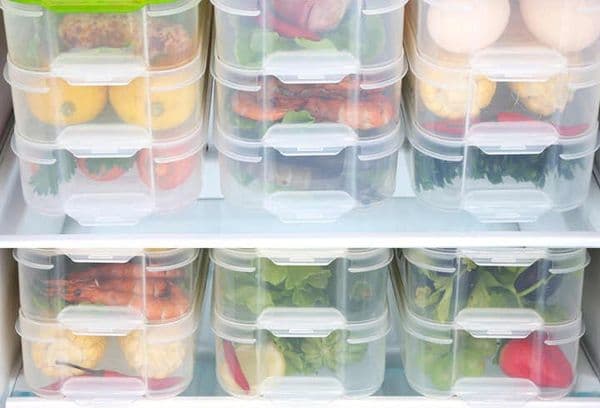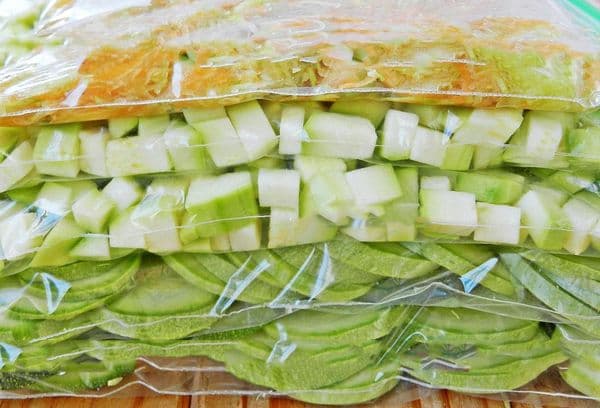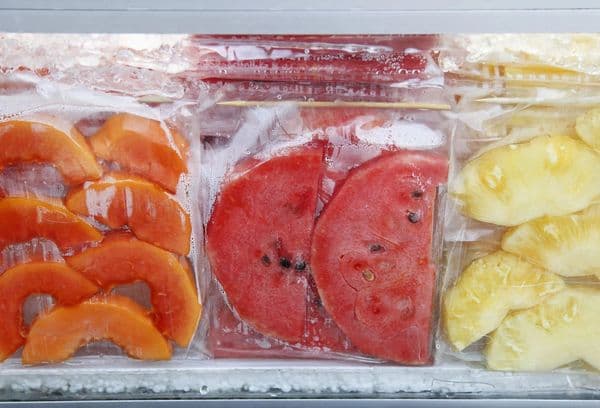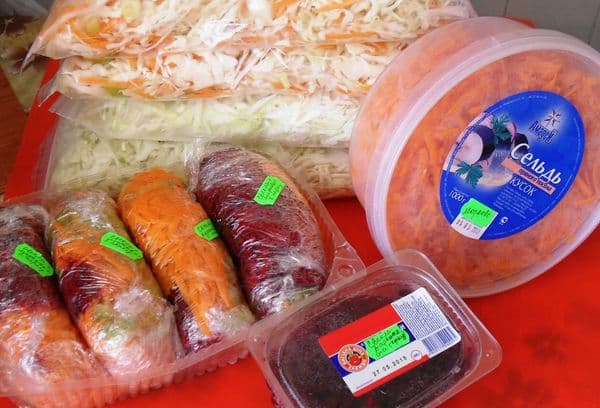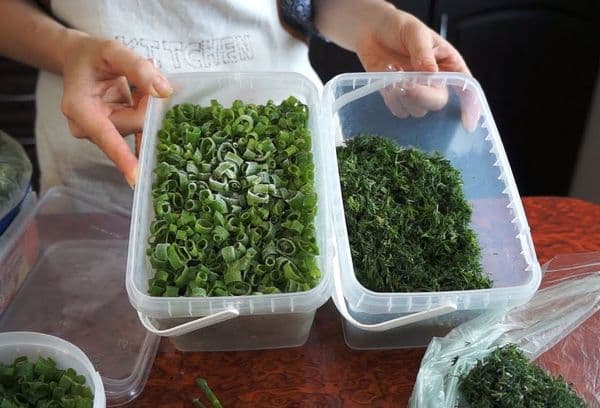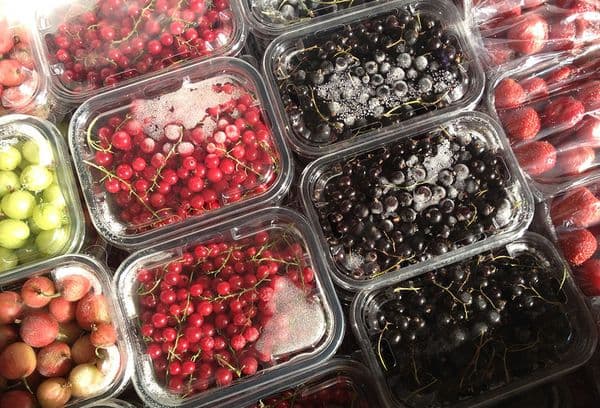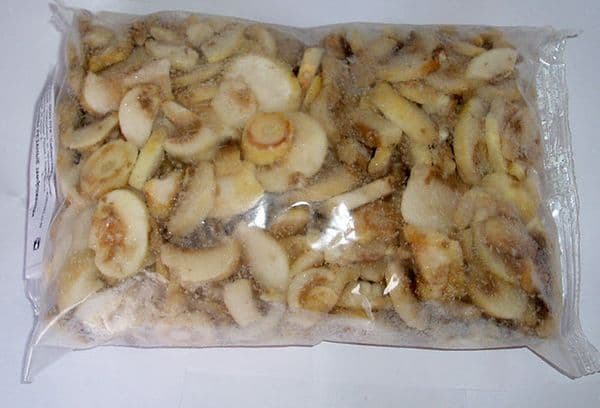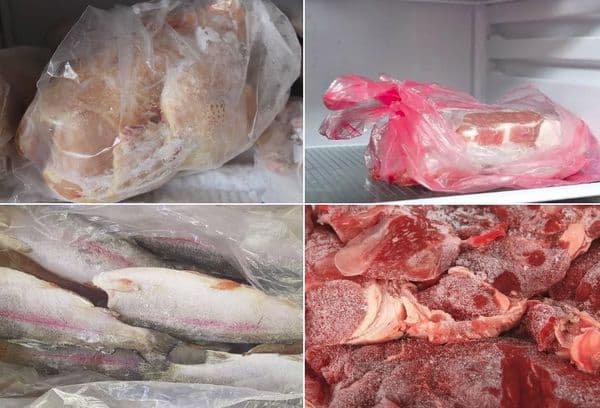What can be frozen for the winter in the freezer?
Content:
It is very nice to see the filled freezer after the summer harvest. Freezing is quick and convenient, products are stored in the cold for a long time and remain healthy and tasty. So what can be frozen for the winter in the freezer? Various vegetables, herbs, fruits and berries, mixtures of different products, semi-finished products based on cereals, vegetables, meat and fish.
Pros of Freezing Products
The freezer compartment in the refrigerator or a separate appliance with several shelves gives a huge advantage. Many healthy and natural products are available only in a certain period, and they will lie in the freezer from several months to one year.
All the benefits of storing food in the freezer:
- During shock freezing, the products retain a maximum of useful substances in the composition, remain elastic, bright and fragrant, like fresh.
- Storage does not require the addition of salt, sugar, boiling, although in some recipes additional preparation of vegetables is used.
- Many fruits harvested and frozen in the summer are much healthier than those sold in the winter in supermarkets.
- Spend a couple of days preparing frozen foods and you will be provided with convenient portions throughout the winter. Freezing significantly saves the time that the hostess spends every day at the stove.
- Possibility of experiments, interesting forms of freezing for children's breakfasts.
- Save money in the winter.
Disadvantages of freezing are only in two cases:
- If in this way a product is stored to which freezing is not recommended.
- If the device cannot provide a stable low temperature.
General rules
In order for frozen foods to be convenient for further cooking, they must be properly selected. All fruits are ripe, but not ripe. Learn recommendations for choosing natural fruits and vegetables if you do not have your own garden.
The magazine purityis.decorexpro.com/en/ emphasizes: deformed, wrinkled, pest-affected products are not suitable.
Everything must be washed and dried, including greens: excess moisture will freeze, forming an ice crust. Such a product takes up more space, and even when thawing, it spreads and loses taste.
Tip
To speed up the drying of the product, use the hot air dryer function.
You should carefully consider the choice of containers for storage:
- Use plastic containers with a lid, bags for freezing, bags with clasps, trays, boxes for dairy products.
- Suitable cling film, foil.
- By the way there will be molds for ice, baking, sweets, including curly ones.
- Garbage bags, non-food plastic products, fabric bags, wrapping paper are not suitable for storage.
Important
Repeated freezing is always prohibited!
Another important point is the expiration date. The maximum storage period for vegetables, berries and fruits is one year, greens last up to 4-10 months, mushrooms - up to six months. Delay is not allowed. In order not to forget to implement freezing on time, always sign the packing date and expiration date.
All these rules are extremely simple, but they should be strictly observed.
Freezing vegetables and herbs
The first thing to do after harvesting is to freeze ripe vegetables and fragrant greens. Products must be washed, peeled, petioles and seeds. You can store it in whole form, and in chopped and even pureed. It all depends on the future goals of the hostess.The best option is several ways of slicing, so the menu will be varied.
General rule for vegetables
Slices and other types of slices are first frozen separately, and then poured into a common package. So the products do not stick together.
What vegetables can be frozen at home:
- Tomatoes are frozen either in cubes or circles. The first option is useful for soups and stews, the second - for pizza and meat in French. It is necessary to remove the skin from the fruit, dipping them in boiling water. Tomato puree is easily made using a blender. It is distributed in cups or ice molds.
- Cherry tomatoes are frozen completely, just make a couple of punctures of the pulp so that it does not crack.
- Bell pepper is previously cleaned of the stalk and seeds. Then they leave it whole and use it for stuffing or cut into strips and cubes.
- Broccoli cauliflower is very easy to store. The head of cabbage is first divided into inflorescences, then everything is washed, dried and distributed into packets. Broccoli sometimes blanch. To do this, first keep the cabbage in boiling water for a couple of minutes, and then move it to ice water for cooling.
- Eggplants are stored raw, blanched and baked. The finished fruit goes to the dish immediately after defrosting and cooks for a couple of minutes. Raw will have to work longer.
- Zucchini and zucchini are preferably slightly boiled before storage. If this is not done, the flesh will have a bitter taste. Be sure to remove the peel and seeds. Then cut into convenient pieces and keep in boiling water for no more than 15 minutes. Cooled pieces are sent to the freezer.
- The way to freeze pumpkin is similar to working with zucchini and zucchini. It is frozen in cubes, in the form of mashed potatoes, grated or blanched.
- Ears of corn are frozen in whole or in separate grains. It is recommended that you first blanch the heads of cabbage so that the grains retain their color and sweetness better.
- Green beans are well stored in the cold, they are used both separately and in vegetable mixtures. Pre pods blanch.
- Cucumbers are also frozen despite watery flesh. Small gherkins are stored whole, large fruits are cut and rubbed in a convenient way.
- It is convenient to store carrots in grated form for frying. The same thing is beets.
- The celery stalk is frozen whole or in small cubes.
- Horseradish root harvested in grated form.
Greenery
How to freeze different greens:
- Parsley, dill, cilantro, green onions are thoroughly washed, then dried and placed in portioned packets. Remove all air from the packaging. Even greens can be mashed and stored in ice molds.
- Sorrel is recommended to cut and blanch.
- Basil is most delicious in olive oil: it is chopped into small pieces, mixed with oil and poured into ice molds.
- Spinach leaves are rolled up in tubes and wrapped tightly with cling film.
- Leaf lettuce, arugula, cress, tarragon, rosemary and other aromatic herbs are stored strictly dry and in tight sealed containers.
- The leaves of currant, raspberry and mint for tea are frozen whole, but it is better to dry them.
Tip
Keep all foods in small portions. If you pour everything into a common package, you have to regularly get it and return it back. It harms the product.
Fruits and berries in the freezer
The list of fruits and berries for freezing is as extensive as the vegetable group. What fruits best tolerate low temperatures:
- peaches, plums, apricots - you just need to remove the stone;
- pears cut into slices or mashed with sugar;
- quince is stored in round slices or cubes;
- apples are peeled and peeled, then they are mashed, rubbed, cut into cubes, etc.
Berries for freezing, list and recommendations:
- The main rule: if the berry has a dense skin, then you can freeze it whole, if the structure is soft, then make mashed potatoes.
- Entirely stored grapes, currants, cherries, gooseberries, blueberries, honeysuckle.
- Shock freezing will preserve the integrity of raspberries, blackberries and strawberries.
- The berries are sprinkled with sugar if they are not sweet enough.
- Mash is easy with a blender. Soft strawberries and raspberries are kneaded with a fork. Store mashed potatoes in ice molds or use a device for ice cream balls.
- The berries in the syrup remain sweet, they are used for cooking compotes. To do this, mix sugar and water (1: 2), melt the syrup and pour the fruit at half height. After the syrup has cooled, the containers are sent to the freezer.
Use the turbo-freezing mode: it is enough to keep fresh food in the chamber for a couple of hours so that they instantly freeze. After that, set the standard –18 degrees, and preferably –20–25 degrees.
Tip
To prevent food odors from mixing in the freezer, use some shelves for fruits, vegetables, and mixtures, and others for meat products.
Mushrooms
Most edible fungi tolerate freezing. Freshly picked champignons, honey agarics, porcini mushrooms, aspen mushrooms, chanterelles, mushrooms are sent for long storage.
How to quickly freeze mushrooms:
- Mushrooms sorted out for worminess.
- All washed and dried.
- Small mushrooms are frozen whole, large ones - in pieces.
- Mushrooms are stored after cooking: they are kept in boiling water for 5-7 minutes, cooled and stacked in containers.
Semi-finished products, mixtures
Ideas for vegetable preserves that make cooking easier:
- Bell peppers stuffed with rice, minced meat or vegetables.
- Mix with rice cooked until half cooked, corn kernels, beans, peppers, green peas, etc.
- Standard set for soup: carrots, onions, beets, bell peppers, tomatoes. Everything is preliminarily lightly fried, but this is not necessary.
- Fry separately from onions and carrots is frozen.
- Homemade dumplings with potato and berry filling.
- Mixtures of herbs for soup.
- Berry mixes for fruit drinks and compote: cherry, currant, raspberry, gooseberry, etc.
Meat and fish
There is no need to know much about storing meat and fish. Products are thoroughly washed and dried, distributed in separate packets in convenient portions.
Shelf life of poultry is 7-12 months, pork - 6-10 months, beef - 12 months. Fish is stored from 6 months to a year, depending on the species.
What foods should not be frozen
What should not be kept in the freezer, especially if the device does not have a shock freeze function:
- Raw onions and garlic - they become lethargic and tasteless.
- Hard cheeses - only shock freezing, soft cheeses are best stored in the refrigerator.
- Dairy products - yogurt, sour cream, etc. Their condition after thawing leaves much to be desired.
- Whole fruits with a lot of moisture in the composition, such as melons and watermelons. In this case, it is better to give preference to mashed potatoes or juice.
- Some leafy greens lose their shape and darken: a salad, spinach, sorrel.
- Slices of radish, turnips, leaves of white cabbage spoil in the freezer.
Use the freezer to the fullest: provide yourself and your family with useful freezing, so that in winter the menu is varied, tasty and rich in nutrients.
